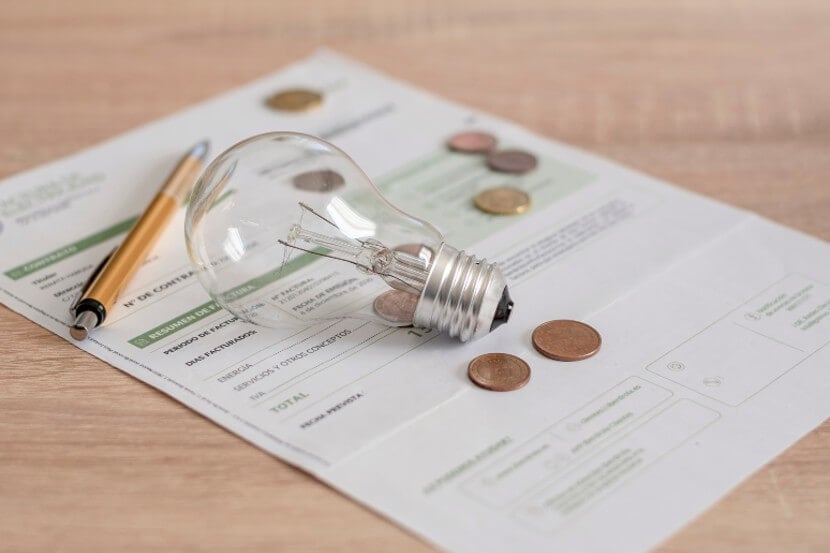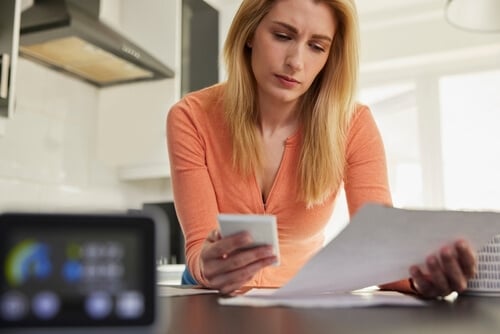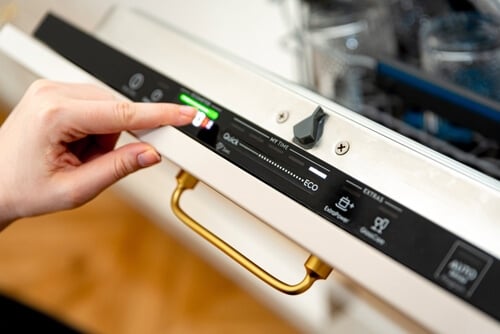Deciphering an energy bill isn’t always easy, but it’s essential if you want reassurance that you’re not spending more than necessary. Here’s all you need to know about how to read your energy bill.

Switching energy providers
If you're looking for certainty on your energy bills, compare energy deals to see fixed deals that are currently available.
What information is included in your energy bill?
Your energy provider must include certain information on your bill aside from identifying you as the customer and confirming the energy’s been used at your property.
All bills must include:
- Your name and address.
- The name and address of your energy supplier.
- Your customer account or reference number.
- The serial numbers for your gas and electricity meters, known as your Meter Point Administration Numbers (MPAN).
- A record of your meter readings.
- How much gas and electricity you’ve used over your last billing period (typically a quarter).
- Your current bill, with a breakdown of charges.
- The tariff you’re on, including the price you pay per unit of energy. It should also include details of any standing charge regardless of your energy consumption.
- Contract details, including the end date and an explanation of any exit fees.
- A tariff comparison rate, so you can compare your usage with that of a typical customer. The specifics depend on what type of energy tariff you have.
- Your right to switch. Providers must include a reminder that you're entitled to move to a new provider if you wish.
Armed with this information, you can challenge any mistakes you think your supplier’s made, such as overestimating your energy use. You can do this by sending them an accurate up-to-date meter reading.
The details in your bill are essential reading if you’re feeling the energy price squeeze. For a start, you can see whether you’re using much more than the average household. If you are, your bill makes it easier to compare your tariff with others currently available and consider switching energy providers.
Other information to look for on your energy bill
You should also look out for the following information, which can support any decision you make regarding switching energy tariffs. It could also help you focus on reducing your use.
-
The bill date: when your bill was processed and sent to you.
-
Bill period: the period covered by your latest bill.
-
Last payment: detailing how much you paid in your last bill.
-
Energy usage: a breakdown of exactly what you’re paying for.
-
Discounts: a summary of any discounts you accumulated.
-
Fees: a detailed summary of any fees and charges incurred over the payment period.
How do I check how much energy I'm consuming?
One of the key reasons your energy bill contains so much information is to allow you to moderate your gas and electricity use. Comparing your last 2 bills, and the latest with the corresponding one from last year could indicate whether you’re using too much energy.
By looking at how many kilowatt-hours (kWh) used you can see whether you’ve increased your consumption. If you have, you can then look for ways to cut back.
While you’re at it, be sure to check that all the details in your bill are correct, including meter serial numbers. After all, you don’t want to be paying the wrong amount due to an admin error. Also, take note of the meter reading that’s recorded on the bill and compare with that on your meter.
How are my energy bills calculated?
Unless you’ve got a smart meter or you pre-pay for energy, the chances are the bill is based on your estimated power use. This could be wide of the mark, but not through a lack of effort on the part of your energy company to get it right.
Energy companies draw on a raft of data to arrive at an estimate. For example, they look at your previous bills, usually for the same quarter or month. This is because your energy consumption can be expected to follow a similar pattern, being higher in the cold winter months and lower in the summer.
The bottom line is if you don’t provide readings or access to your meter, the supplier can’t generate an accurate bill. Instead, it relies on its records and database of similar properties and takes the average to arrive at a total cost.
What if my energy bills are too high or low?
If your bill’s estimate of your gas and electricity use is too high or too low, let your energy company know. Too high means a bigger than necessary bill. Too low could make things more difficult in the future as you have to pay for what you use eventually. It's best to be as accurate as you can with reporting your monthly usage so you can budget accordingly.
Why have I had a duplicate electricity bill?
Occasionally you may get a duplicate energy bill through the post or inbox. This is usually due to one of these reasons:
- Your energy supplier has made a mistake, which it’s sought to rectify by sending out a corrected bill. Compare your previous one with the new version to see what’s changed.
- You’ve underpaid as the supplier has based the bill on its own estimate. If your meter’s subsequently been read there may be a shortfall, which the new bill seeks to correct.
Reading business energy bills
If you work from home and are consuming at least half of your household energy for business purposes, it might be worth switching to a business energy contact.
Business energy bills read in a similar way to domestic ones, but in addition to what’s on a domestic energy bill, a business bill includes:
- Wholesale costs: the amounts power stations charge for producing electricity.
- Network charges: costs incurred through making sure the energy grid and other distribution channels work efficiently.
- VAT: Energy bills include 5% VAT for domestic users and 20% for businesses users. The 20% VAT rate can be discounted to 5% if small businesses limit their energy use.
- Climate change levy: a charge imposed on every unit of non-renewable energy used.
- Other green levies: Your bill may also detail additional levies and charges such as renewable levies imposed to generate money for operators of renewable energy plants.
How to switch energy supplier
It’s easy to switch energy supplier providing you’re on a variable rate tariff or if your current fixed rate contract is ending shortly.
All you need is to have certain information ready (all of which should be on your latest bill):
- Your current energy tariff
- Your annual energy usage or costs
Top tips to reduce your energy costs
Despite reports of a lack of competitive tariffs at present it makes sense to do your own research and regularly review what’s available. And even if there aren’t any attractive deals you could save money on your energy bills by considering:
- Get a fuel voucher: If you can’t afford to top up your prepayment meter you may be able to get a fuel voucher from your local council, which gives you some credit.
- Make changes: There are plenty of ways to keep your energy costs down at home. You could lower the thermostat by a degree or 2, switch lights off when you’re not in the room, and don’t leave appliances on standby
- Go paper free: Switching to an online account could be worthwhile, as these tariffs sometimes come with a discount.







